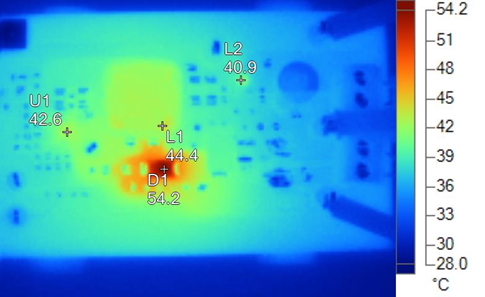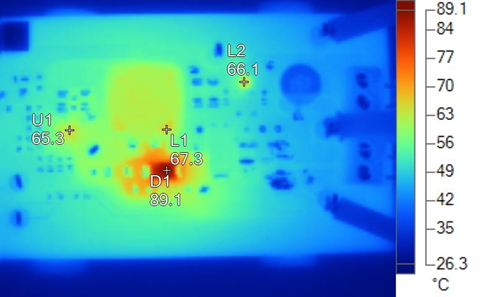TIDT316 December 2022
- Description
- Features
- Applications
- 1Test Prerequisites
- 2Testing and Results
- 3Waveforms
- A Output Ripple Reduction, Output Current Capability, and Dithering Option
2.5.1 8-V Input Voltage
Table 2-1 Temperature Values for 8
VIN
| Name | 1 AOUT | 2 AOUT |
|---|---|---|
| D1 | 54.2°C | 89.1°C |
| L1 | 44.4°C | 67.3°C |
| L2 | 40.9°C | 66.1°C |
| U1 | 42.6°C | 65.3°C |
Table 2-2 Thermal Images for 8
VIN
| 1 AOUT | 2 AOUT |
|---|---|

|

|